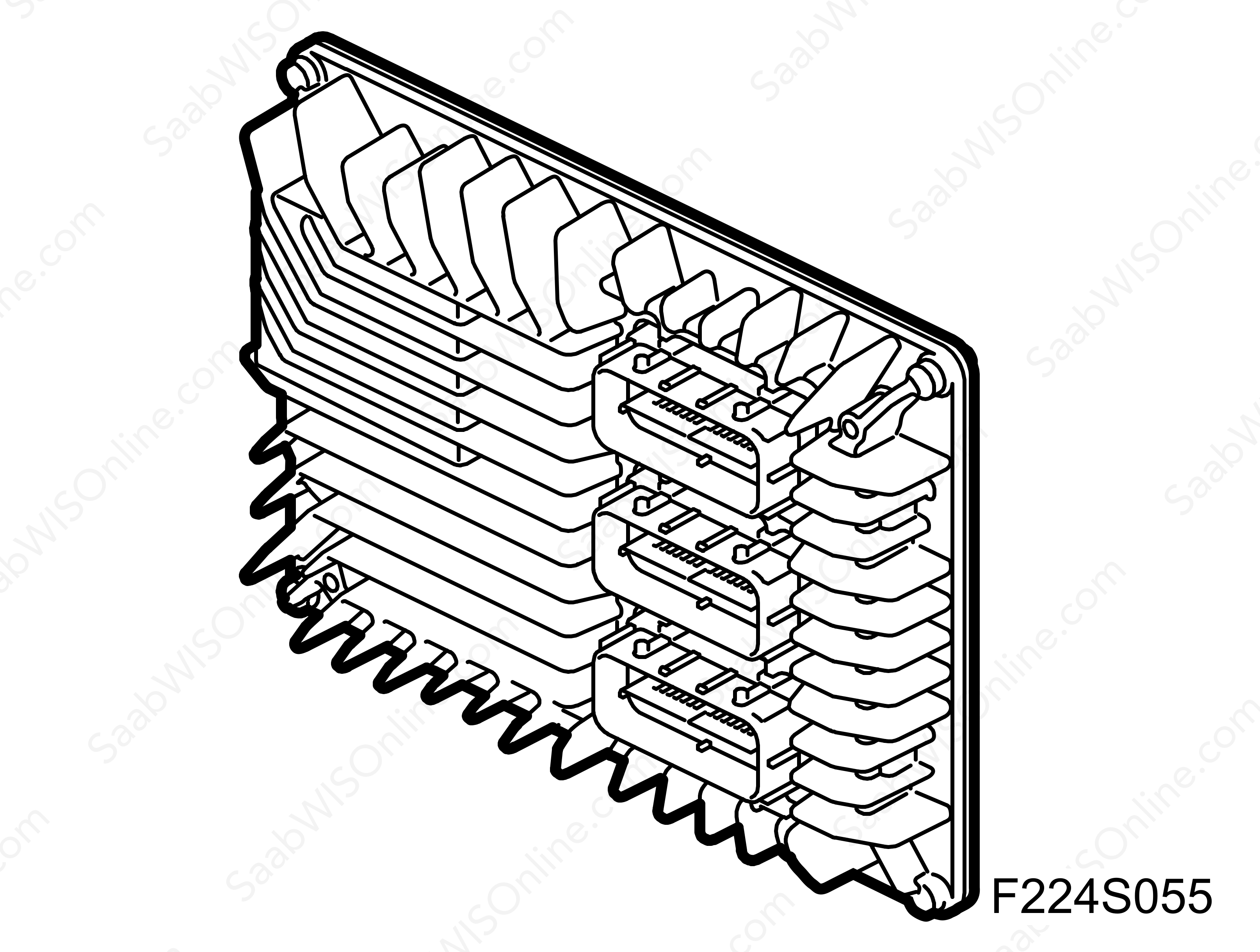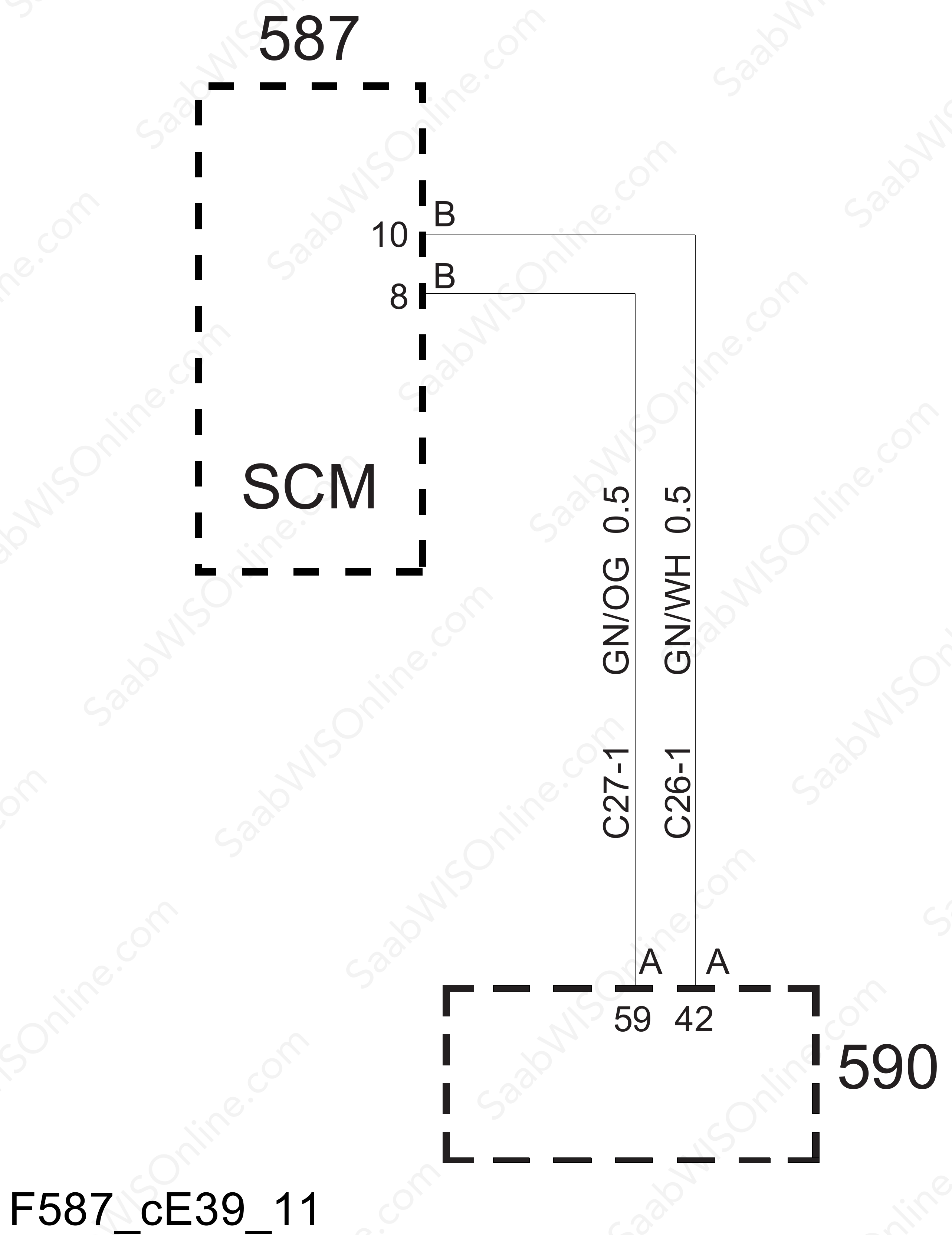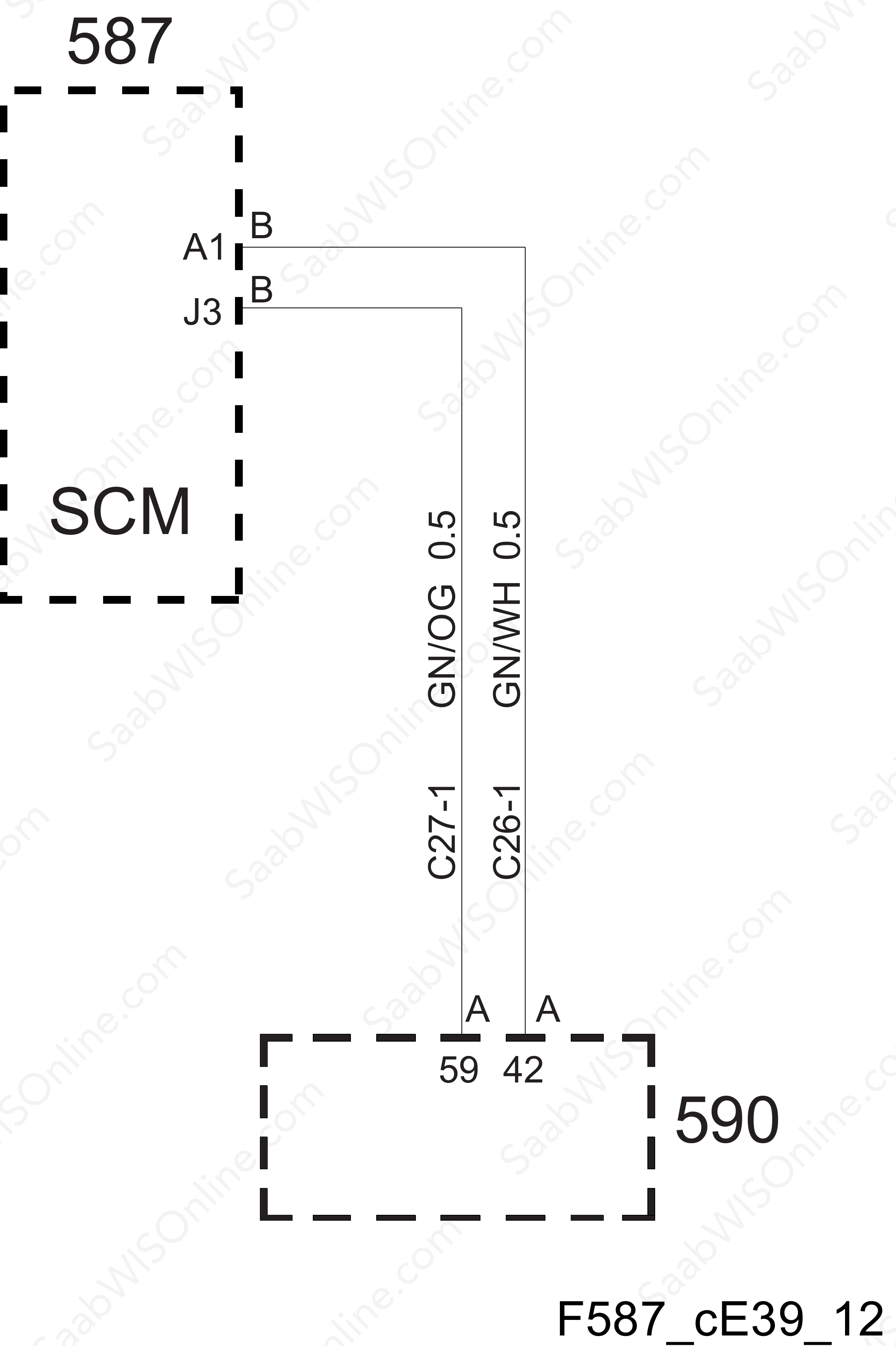PRE-RELEASE
Description of Engine Control Module (590), E39
| Description of Engine Control Module (590), E39 |
| General |
The engine control module, (ECM), E39, interacts with several emission-related components and systems as well as monitors that the emission-related components and systems are not impaired. OBD II diagnosis monitors system performance and a DTC is activated if system performance is impaired. ECM is part of a bus network and communicates with certain other control modules in the car.
The MIL lamp function and storage of DTCs is determined by the type of diagnostic trouble code. A DTC is classed as type A or type B if it is emission related. Type C are DTCs that are not emission related.
ECM is located in the engine bay and is the control centre for the engine management system. See the component and wiring diagrams to determine which systems are controlled by ECM.
Located in engine bay: Control module, E39 (590)
The engine control module monitors the information from various sensors and other input data, and controls the systems that impact on vehicle performance and emissions. The engine control module also conducts diagnostic tests on various parts of the system. ECM can detect operating problems and notify the driver through the MIL. When ECM detects a malfunction, it stores a DTC. The problem area is identified by the code that has been activated. This assists the technician trying to rectify the fault.

| Function of engine control module |
ECM can deliver 5 V or 12 V to the various sensors and switches. This is achieved with a pull-up resistor from the regulating power supply inside ECM. In certain cases, it may be that a normal voltmeter does not give a correct result due to the resistance of the input signal being too low. To ensure a correct voltage reading, it is therefore necessary to use a digital multimeter with an input impedance of at least 10 megohms.
The engine control module regulates the output circuits by controlling the ground or supply circuit with transistors.
Wiring diagram SCM generation 1

Wiring diagram SCM generation 2

| EEPROM |
The EEPROM (electronically erasable programmable read-only memory) is a permanent memory that is permanently mounted in the ECM. The EEPROM contains the software and calibration information that ECM needs to control the function of the powertrain.
Special equipment is need to reprogram the engine control module, together with the correct software and calibration for the vehicle.
| Data Link Connector (DLC) |
The data link connector can be used by a technician to access serial data for diagnosis. The connector lets the technician use the scan tool to monitor serial data parameters and view trouble code information. The data link connector is under the dashboard on the driver's side.
| Malfunction indicator (MIL) |
The malfunction indicator (MIL) is inside the instrument unit (IPC). The MIL is controlled by ECM and comes on when ECM registers a condition that effects the car exhaust.
| Maintenance of engine control module |
The engine control module ECM is designed to handle normal current outputs while the engine is running. Care must be taken, however, to avoid overloading the circuits. The engine control module circuits must not be grounded applied voltage to when testing the circuits unless the fault diagnosis directs it to be done. These circuits should only be tested using a digital multimeter (DMM).
| Emission diagnosis for national vehicle inspection programme. |
This vehicle is equipped with OBD II, an integral diagnostic system designed to diagnose all conditions that could cause high levels of the following emissions:
| • |
Hydrocarbons (HC)
|
|
| • |
Carbon monoxide (CO)
|
|
| • |
Nitrogen oxides (NOx)
|
|
| • |
Evaporative emission system (EVAP)
|
|
If the car's diagnosis system (ECM) detects a condition that can cause increased exhaust emissions, the MIL will come on at the request of ECM and a DTC will be stored for this condition.
| Aftermarket fitted electrical equipment or vacuum equipment |
|
|||||||
|
|||||||
Aftermarket fitted electrical equipment or vacuum equipment is all equipment that is fitted to the car once it has left the factory and which is connected to the vehicle's electrical system or vacuum system. The vehicle has not been designed to accept this type of equipment.
Aftermarket fitted electrical equipment can cause malfunctions to the powertrain even if it has been fitted according to these strict guidelines. This also applies to equipment that is not connected to the vehicles electrical system, such as mobile telephones and radios. The first step when diagnosing faults to the powertrain is therefore to remove all aftermarket fitted electronic equipment from the vehicle. If the problem remains once this has been done, it can be diagnosed the normal way.
| Damaged due to electrostatic discharge (ESD) |
| Note | ||
|
NEVER touch the ECM terminals as the module can be damaged by any electrostatic discharges. |
The electronic components used on the control system are often designed to handle very low voltages. These electronic components can easily be damaged by electrostatic discharges. Certain electronic components can be damaged by static electricity as low as 100 V or less. As a comparison, as much as 4,000 V is needed before a human being can feel a static discharge.
There are many ways that a person can be charged with static electricity. The most usual reasons for static charging are friction and induction. Charging through friction can be achieved by a person rubbing their body on the car seat, for example.
Inductive charging arises when a person with insulated shoes is close to a strongly charged object and suddenly touches a ground. A charge of the same polarity is drawn off leaving the person charged with the opposite polarity. Static electricity can cause damage and therefore great care should be taken when handling and testing electronic components.
| Information label concerning emission control |
The information label regarding the vehicle's emission control is under the bonnet and contains important directions about emission specifications and settings. In the top left-hand corner is information concerning exhaust emissions. The information covers the year, engine manufacturing division, engine capacity in litres, vehicle classification and type of fuel dosing system.
This label is in the engine bay of every vehicle from Saab Automobile

 Warning
Warning

